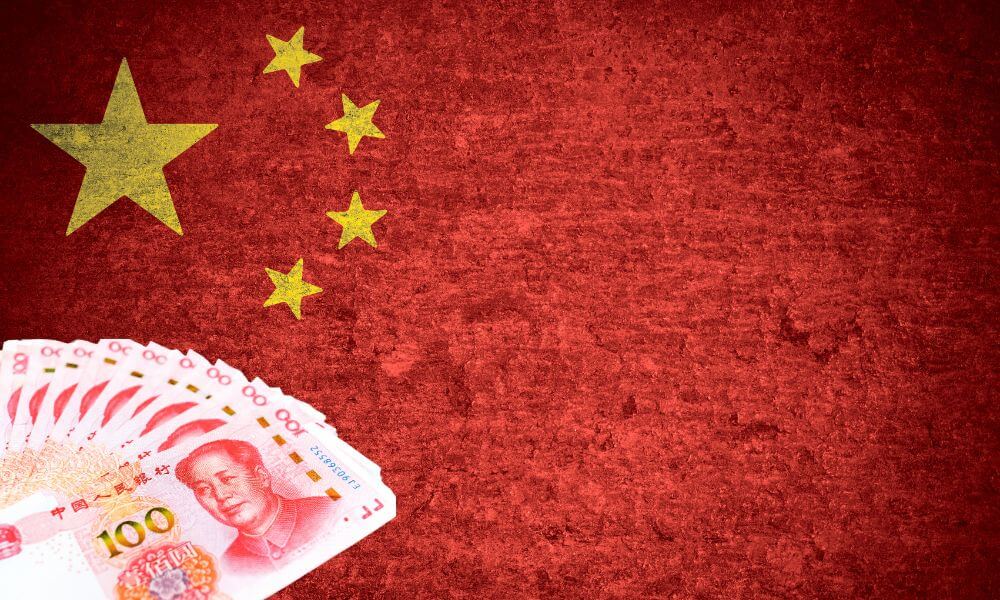The official currency of China is known as the Renminbi, of which the yuan is the basic unit. The yuan, though, is also used to refer to Chinese currency in general in international discourse. It is the world’s fifth most traded currency and is issued by the People’s Bank of China, the nation’s monetary authority.
The official name of the currency in China, then, is the Renminbi, though it is more often referred to as the yuan in international contexts.
Given the size of China it should come as no surprise that the currency is among the most traded in the world and of central importance to the global economy.
Let’s find out more.

What is the currency of China?
The main currency of China is the Renminbi.
The basic unit of this currency is the yuan.
This is the simplest way of looking at the question, though in one sense China also has two different currencies.
However, both of these currencies use the same bank notes but they are not worth the same.
We will look at this in more detail shortly.
In international nomenclature, the currency of China is often referred to simply as the yuan, rather than as the Renminbi.
One yuan can be divided into ten jiao, and a jiao can be divided into 10 fen.
So, it can get a bit convoluted simply when talking about the words we use to discuss Chinese currency.
The ISO code for the Chinese currency is CNY, the PRC’s country code and the Y for Yuan.
The abbreviation RMB is sometimes also used, though this is not an official ISO code even though official banks and financial institutions do continue to use it.
In Mandarin, the word “kuai” is most commonly used when talking about money and you will very rarely hear the terms yuan or Renminbi used.
Mandarin is by far the most common language in China, so again the terms we use for Chinese money are highly varied and dependent on a lot of factors.
Currencies known as yuan were ultimately derived from the Spanish American silver dollar, which was imported in large quantities by China between the 16th and 20th Centuries.
The first locally minted, more or less universally accepted Chinese yuan was the silver dragon dollar introduced in 1889 under the Qing dynasty.
The official Renminbi was introduced in 1948 before the People’s Republic was fully established about a year later.
Why does China have two currencies?
The two-currency system is meant to influence and regulate the economy and exchange rates in a number of ways.
On the one hand, having a separate, internationally traded currency is meant to regulate exchange rates in order that China can maintain control of foreign investments.
The Chinese Renminbi is the one used in domestic transactions, whereas the Yuan is what is used in international transactions and outside the mainland.
So, in this sense, they are not really two different currencies; it’s just the way that the currency is referred to depending on the financial context.
You would use the same banknotes, money from the same bank accounts in the wire transfers, and so it would all come from the same source, it is just regulated and controlled in a different way.
China is one of the world’s biggest economies and manufacturers, and so the stability and regulation of its currency is essential to their economy.
International trade is in many ways the backbone of China’s economy, and thus a more complex system is needed, according to the present government, to ensure that the country can continue to provide these services to the world and hold their economic position.
Why was the Renminbi pegged to the US Dollar?
Until 2005, the value of the Chinese Renminbi was pegged to the US Dollar, as indeed have been many countries through the years.
This means that China set a fixed exchange rate between the two currencies.
Again, this was done for a few reasons, being a strategic policy with many benefits to China’s economy.
This would increase the appeal of Chinese exports, and plainly that has been an incredibly successful tactic; China, as mentioned, now dominates world exports and though the value is no longer pegged to the dollar, it was plainly a useful strategy for the time it was implemented.
Why do Hong Kong and China have different currencies?
While Hong Kong is often thought as part of China, it’s crucial to remember that it is administratively autonomous; they are under Chinese hegemony but ultimately they are self-governing and in all but name, an independent nation.
Thus, it is perfectly natural that Hong Kong should have its own distinct currency in the Hong Kong dollar.
Hong Kong is a huge economy in its own right, and is not bound by Chinese rule in this case; without their own currency, they would depend a great deal more on the economic policy decisions of successive Chinese governments.
Thus, they must have their own currency.
China’s two-currency system, then, can at first appear a bit confusing.
Ultimately, though, the simplest way of looking at it is that the Renminbi is the currency of which the yuan is the basic unit.
Given its international status, it should be fairly easy to get your own local currency converted to Chinese currency virtually anywhere in the world, so you don’t need to worry about bringing in anything else.

